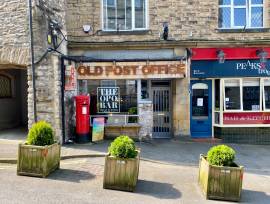ePub: The all-seeing eye
A tiny turbine spins as the liquid passes through a tangle of beer lines and the rudimentary-looking contraptions to which the whole thing is attached kick into action on the demonstration wall in Brulines' Stockton-on-Tees HQ.
It is an application that at its most basic level has been used by the company synonymous with monitoring the beer tie to check whether licensees are pouring the beer they should be pouring. But behind this wall, and behind Brulines' reputation, lie a much greater range of functions that can analyse beer quality, temperature and flow rate.
It is a point which Brulines commercial director Ron Colley, who wants the company to be seen as "more of a friendly fireman than a policeman", is keen to get across. "We want to give the pub a complete service," he says, claiming that Brulines' gear is about far more than being a 'spy for the beer tie'. In addition to beer monitoring, Brulines is, for instance, able to offer a service that monitors fruit machine income in real time. Soon, licensees will also be able to call on the company to keep tabs on spirits pouring, fridge temperatures and customer footfall.
Brulines' basic system, the one chiefly used by pubcos to ensure lessees are buying through the tie, is now installed in close to 22,000 pubs nationwide. However, it is the installation of Brand Quality Monitoring (BQM) software that Brulines is increasingly focusing on. Targeted at helping managed pubs and freehouses achieve quality beer and minimal wastage, BQM is in around 280 sites, including some in the Punch, Scottish & Newcastle Pub Enterprises and major managed estates.
Trials on the BQM equipment began as early as 2002, but it was not officially launched until mid-2006.
BQM account manager Peter Cockerill explains that the change of focus resulted from the fact that Brulines was approaching saturation point in leased and tenanted estates, and needed to look to other kinds of pub.
"Managed pubs have never had any interest in buying outside of the tie," he says. "Instead, they talk about yield and quality. They ask themselves 'what have we poured that we did not sell?' They are concerned with temperature, fobbing and quality for the consumer.
"Those kinds of things were tested by mystery drinking programmes, which are expensive, and therefore decisions tend to be based on very small samples. So we addressed that situation."
So how does BQM work?
A high-tech turbine known as an "intelligent flow meter" - fixed as close as possible to the tap in order to read the quality of the beer as it's poured - spins every time liquid passes through it.
A microchip behind the turbine takes data and sends it to a box which, through similar means to mobile phone technology, transmits it to Brulines' HQ every 15 minutes.
Brulines presents the data to the pubco or licensee through a secure website, and sends them regular reports in which the sprawling data is collated into management reports.The factors monitored by BQM include:
• Line cleaning: the system can determine the type of liquid in the pipes, and will know when line cleaner has been used. Dirty lines are one of the biggest causes of fobbing and loss of quality. Pub operators can be warned when cleaning isn't carried out on a regular basis.
• Flow rate: BQM can tell how long it takes to pour each pint. Many brands specify an optimum flow rate, and not matching it can result in loss of quality. This can happen if technical services has set up the equipment incorrectly or because pub staff have manually altered it. They may, for example, have noticed a beer pouring too slowly and over-compensated.
• Volume (by tap): This differs from the 'spy for the tie' because it looks at the volume dispensed through individual taps. You might have two Stella Artois taps on opposite sides of the bar, say, and customers may order from one side more than the other, leaving the beer serving the relatively under-used tap to sit and deteriorate. Repositioning the taps may be an option, or it might prove that demand does not justify two Stella taps.
Brulines also has separate equipment that measures cellar temperature. This is a digital sensor that sits in the cellar and operates independently, feeding back data that is collated with the rest of the reporting.
"We want to give the pub a complete service in any area in which it is feasible to provide information that is helpful to the licensee," says Ron.
"The thing coming through loud and clear is that people are fed up with just having data chucked at them - they want information that they can act upon."
With all this in place, Brulines seems to be making an effort to escape the reputation of being a 'spy for the tie'.
Time will tell whether it's successful.














